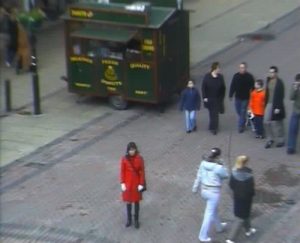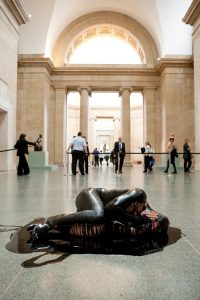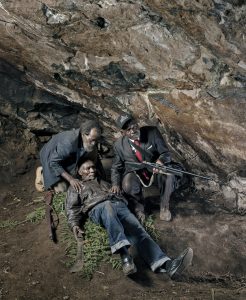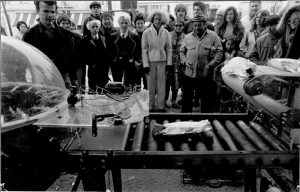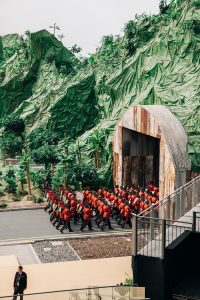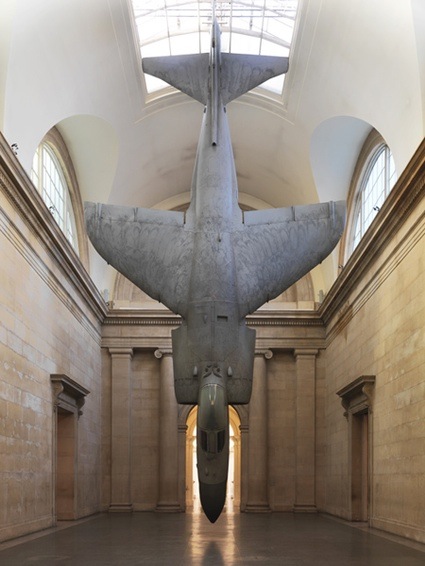 Fiona Banner, Harrier, 2010, BAe Sea Harrier aircraft © Tate Photography / Andrew Dunkley and Sam Drake
Fiona Banner, Harrier, 2010, BAe Sea Harrier aircraft © Tate Photography / Andrew Dunkley and Sam Drake
I tend to avoid blogging about the most well-known galleries. I doubt they need my posts to attract the crowds. On Thursday however, i went to Tate Britain to see Fiona Banner‘s sculptures and realized i would not be able to keep the excitement out of my website.
The British artist has filled Tate Britain’s neoclassical Duveen Galleries with 2 recently decommissioned fighter planes.
An Sea Harrier hangs nose down from the ceiling like a chicken ready to be plucked up. Visitors circle around it, head up, mouth half open and arms dangling along their body.
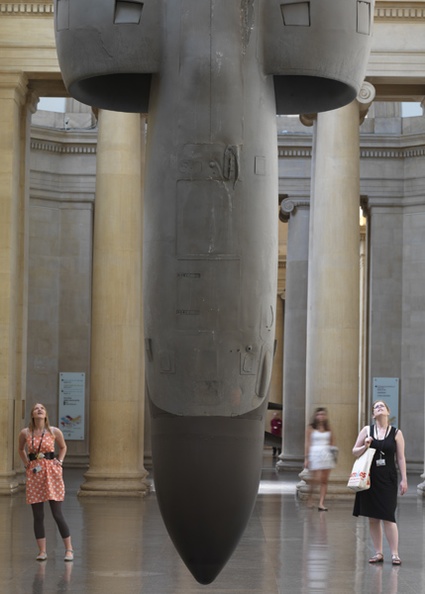 Fiona Banner, Harrier, 2010, BAe Sea Harrier aircraft © Tate Photography / Andrew Dunkley and Sam Drake
Fiona Banner, Harrier, 2010, BAe Sea Harrier aircraft © Tate Photography / Andrew Dunkley and Sam Drake
A Jaguar, its paint stripped and metal polished till it reflects visitors, lies belly up on the ground, like a big predator that has just been gunned down.
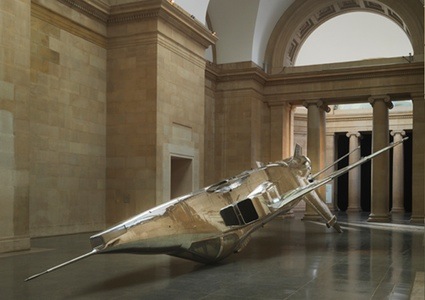 Fiona Banner, Jaguar, 2010, polished Sepecat Jaguar aircraft. © Tate Photography / Andrew Dunkley and Sam Drake
Fiona Banner, Jaguar, 2010, polished Sepecat Jaguar aircraft. © Tate Photography / Andrew Dunkley and Sam Drake
For Banner these objects represent the ‘opposite of language’, used when communication fails. In bringing body and machine into close proximity she explores the tension between the intellectual perception of the fighter plane and physical experience of the object.
No matter how defenseless the two war machines might be now, they retain a formidably menacing aura. As much as i hate to write this, these repulsive carriers of death and destruction are also beautiful, seductive toys.
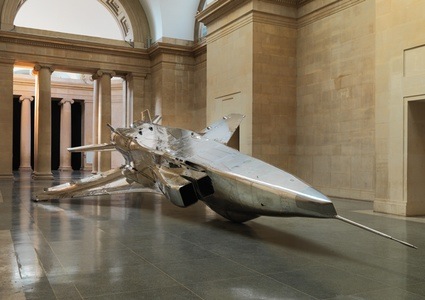 Fiona Banner, Jaguar, 2010, polished Sepecat Jaguar aircraft. © Tate Photography / Andrew Dunkley and Sam Drake
Fiona Banner, Jaguar, 2010, polished Sepecat Jaguar aircraft. © Tate Photography / Andrew Dunkley and Sam Drake
In 2007 already, the artist had used fighting planes to invade Tate Britain. Their size was far less spectacular. They were only kit models of fighter planes in service at the time and they graced Tate’s Christmas tree. Video:
See also: Baghdad, 5 March 2007 at the Imperial War Museum.
Fiona Banner – Tate Britain Duveens Commission 2010 remains open until 3 January 2011.

